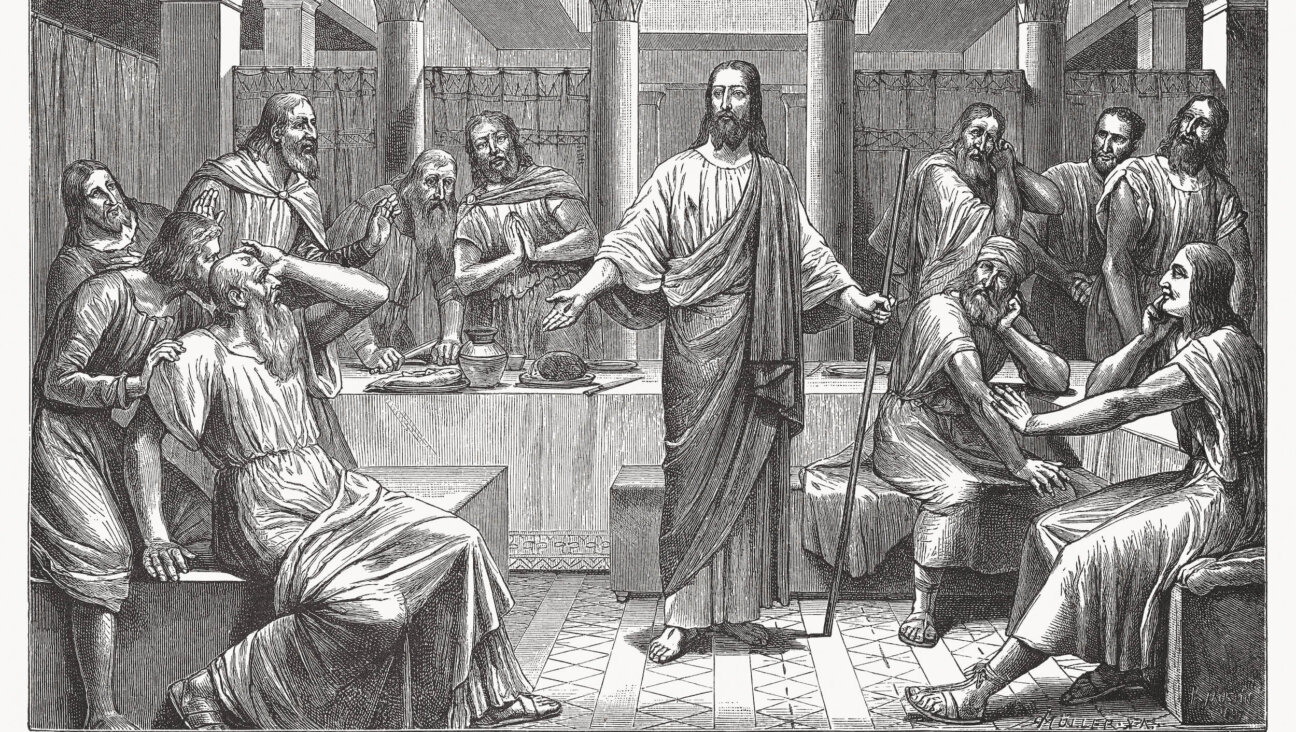With a new score and new ideas, ‘The Golem’ is a must for your Jewish Halloween

Graphic by Angelie Zaslavsky
How do you breathe new life into an age-old tale of creation? With a little help from the bassist of The Flaming Lips.
On Oct. 28, Jewish arts and culture non-profit Reboot is launching “The Golem Rescored” a digital series that adds a fresh score to the 1920 German Expressionist classic “The Golem: How He Came into the World.” The series divides the film into eight parts, each scored by different artists, that can be streamed on YouTube.
Reboot CEO David Katznelson, a horror movie buff and veteran music producer, launched the project after learning that, though Paul Wegener’s massively influential retelling of the Jewish mystique Rabbi Loew’s molding of a man from clay had a production date of 1920, its actual premiere was 1921, making this year the 100th anniversary of its debut.
“The movie originally came out in June,” Katznelson said. “We made a decision. You know what? Come on. We’re gonna put it out June? Or are we gonna put it out on Halloween?”
100 years later, the film, which starred Wegener as the titular Golem – a role he played twice before in 1915’s “The Golem” and 1917’s “The Golem and the Dancing Girl” – remains a chilling spectacle of chiaroscuro lighting and towering, slanted sets. It’s not only the visuals that left a lasting impression on horror. Those who remember the indelible scene of Boris Karloff’s monster throwing flowers in the creek with a young girl in “Frankenstein,” may recognize a moment where the hulking Golem, leaving the walls of the ghetto, encounters a child who offers him an apple.
The new music, which ranges from clanging, celestial soundscapes to the saxophone of Los Lobos’ Steve Berlin, ups the eeriness from the film’s more conventional organ or orchestral score. For the golem’s rampage,the musician ∈Y∋, from the Boredoms created a buzzing, frenetic soundbed that calls to mind a super computer going haywire.
“There is this idea that we need to evolve the Jewish musical canon,” said Katznelson. “I think there is something about having these musicians wrestle with old Jewish content that will create something that is truly beautiful and something that can really last and have impact.”
The film strays a bit from the typical tale of the 16th Century Rabbi Loew — a story likely invented in the 19th century — by involving a demon named Astaroth in the creation of the famed defender of Prague’s Jews. But a raft of experts provide commentary after each installment, situating the story in the context of Jewish myth, film history and the field of artificial intelligence.
“We have people who are well-versed in story, well-versed in pop culture, well-versed in robotics or the occult,” said Torri Yates-Orr, a historian and one of the hosts of the “Golem” series, along with mythologist John Bucher. “We’re looking at the myth of the golem, but we’re also looking at where Wegener was in his work coming off of World War I and how that influenced everything in the film.”
Behind what we see onscreen, Katznelson noted, was a brief “Renaissance moment” of Jewish and non-Jewish collaboration in Germany. While Wegener wasn’t Jewish, his co-writer, Henrik Galeen, was. Also the scribe of “Nosferatu,” Galeen, like many filmmakers in the school of German Expressionism, left Germany with the rise of the Nazis. Wegener remained, acting in state films, and, after World War II, played the Jewish title role in the stage play “Nathan the Wise” a plea for religious tolerance set amid the Crusades.
In her commentary for the series Maya Barzilai, the author of a 2020 book on the film, explains how Wegener’s likely PTSD from the first World War figured into his creation of the film. In his diaries, the 40-year-old actor, who fought in Flanders, described the horrors of trench warfare, often noting how his uniform got caked in clay. His golem may be an avenger for the Jews while, at the same time, standing in for an exploited veteran, unable to speak of the carnage he’s seen.
A century after the lights first dimmed on Wegener’s spectacle — to, one imagines, quite different music — its story, like the much older one on which it’s based, still resonates.
“At the base of this story, and the base of this series that we’ve created is this question that we’ve been asking since the beginning of time,” Bucher said, “And it’s ‘what does it mean to be human?’”

















